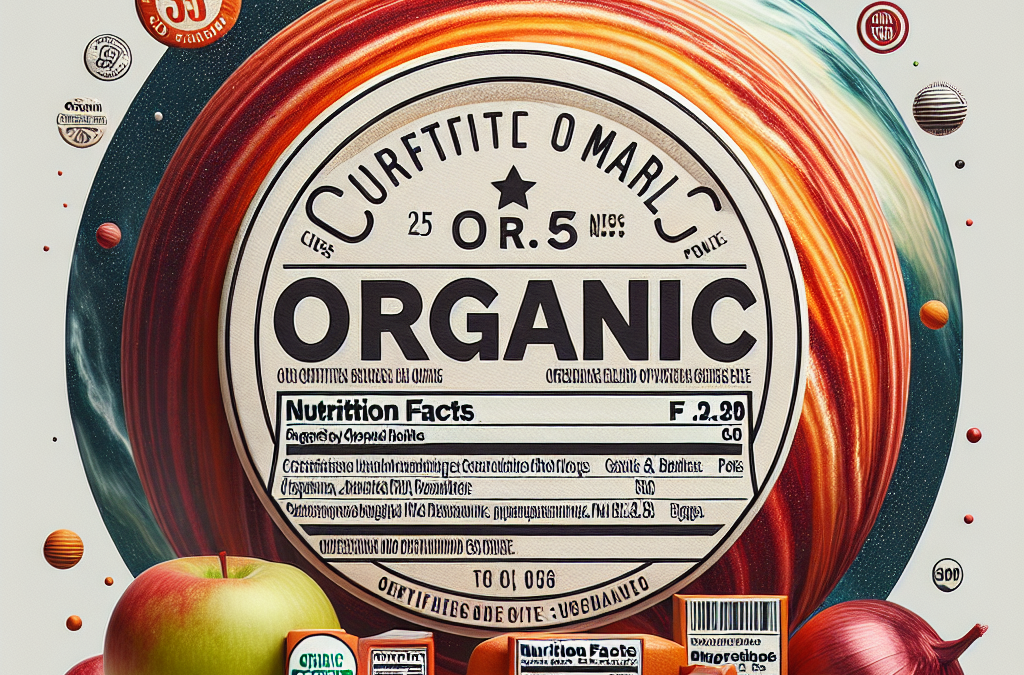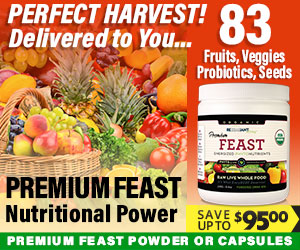- 1. Prioritize Certified Organic Produce
- 2. Incorporate Organic Protein Sources
- 3. Plan Meals Around Organic Whole Grains
- 4. Use Organic Dairy and Alternatives
- 5. Focus on Organic Snacks and Beverages
- 6. Read Labels Carefully and Know Certifications
- 7. Create a Seasonal Organic Meal Plan
- 8. Limit Processed Foods and Additives
- 9. Engage in Organic Gardening or Local CSAs
- 10. Track Your Progress and Adjust Accordingly
1. Prioritize Certified Organic Produce
Understanding the Benefits of Organic Fruits and Vegetables
In 2025, more consumers are leaning toward a certified organic diet plan because of the health benefits associated with organic produce. Organic fruits and vegetables are grown without synthetic pesticides, herbicides, or genetically modified organisms (GMOs). This means fewer chemical residues on your food, which can significantly reduce your exposure to harmful substances. For example, studies show that organic produce often contains higher levels of antioxidants, which are beneficial for overall health and immune support.
By focusing on organic produce, you also support sustainable farming practices that preserve soil health and biodiversity. Transitioning to a certified organic diet plan with plenty of fresh, seasonal organic fruits and vegetables can boost your nutrient intake and contribute to a healthier environment. In 2025, demand for organic farming continues to grow, making it easier to access high-quality organic foods in your local markets.
Tips for Incorporating Organic Produce into Your Meals
Start by making a list of your favorite organic fruits and vegetables and shop at local farmers’ markets or organic stores regularly. When planning your weekly meals, incorporate a variety of produce to ensure you get a range of nutrients. For example, include leafy greens like spinach and kale, colorful peppers, and seasonal berries. Fresh organic produce naturally becomes the foundation of a healthy certified organic diet plan.
Additionally, consider growing some of your own organic produce if space allows. Container gardening for herbs or small vegetables can be rewarding and cost-effective. Remember, when selecting produce, always look for the official organic certification labelâlike USDA Organicâto ensure authenticity. This commitment helps you stay aligned with your goal of maintaining a truly certified organic diet plan in 2025.
2. Incorporate Organic Protein Sources
Choosing Quality Organic Proteins
Protein is a vital part of any diet, and in 2025, a certified organic diet plan emphasizes sourcing organic, high-quality proteins. Organic meats, poultry, and eggs come from animals raised without antibiotics or growth hormones, ensuring fewer chemical residues. Plant-based protein options like organic beans, lentils, and legumes have also gained popularity for their health benefits and environmental sustainability.
For example, organic pasture-raised eggs contain higher omega-3 fatty acids compared to conventional eggs. Incorporating a variety of organic protein sources balances nutrition and supports your bodyâs needs. Choosing organic also aligns with your goal of avoiding unnecessary chemicals in your diet, which is especially important as transparency and certification become more accessible in 2025.
Practical Tips for Adding Organic Proteins
Meal planning around organic protein sources ensures consistency in your certified organic diet plan. Consider making batch cooked organic chicken or turkey for the week, or explore plant-based options like hummus or black bean salads. Organic protein powders are also a convenient addition for smoothies or post-workout nutrition. Always look for certification labels to verify the authenticity of your protein sources.
By incorporating a balanced mix of organic proteins into your meals, you not only improve your health but also support organic farming practices that prioritize animal welfare and sustainability. This approach helps make your 2025 organic diet plan both nutritious and environmentally responsible.
3. Plan Meals Around Organic Whole Grains
The Role of Organic Whole Grains in Your Diet
Whole grains like quinoa, brown rice, oats, and whole wheat are staples of an effective certified organic diet plan in 2025. These grains provide essential fiber, vitamins, and minerals vital for digestive health and sustained energy. Eating organic whole grains avoids exposure to pesticides and other chemicals used in conventional grain farming.
Research indicates that diets rich in whole grains are linked to lower risks of cardiovascular disease and type 2 diabetes. In 2025, choosing organic options supports clean eating and aligns with overall wellness goals. Incorporating a variety of grains also helps prevent dietary monotony, making your organic diet enjoyable and sustainable.
Creative Ways to Incorporate Whole Grains
Start your day with organic oatmeal topped with fresh berries and nuts, or swap white bread for organic whole-grain options. You can also prepare organic quinoa or bulgur as a base for salads or stir-fries. Meal prepping with these grains ensures quick, healthful additions to your lunch or dinner.
For those interested in expanding their culinary horizons, consider trying new organic grains like millet or amaranth. These can be cooked in advance and stored, simplifying your meal planning. Ultimately, building your organic meal plan around a variety of whole grains enhances both flavor and nutrient diversity.
4. Use Organic Dairy and Alternatives
Choosing Organic Dairy Products
In 2025, more health-conscious consumers are opting for organic dairy to avoid added hormones and antibiotics. Organic dairy products, including milk, cheese, and yogurt, are produced from animals raised on organic feed without synthetic chemicals. These products tend to contain higher levels of beneficial nutrients like omega-3 fatty acids and conjugated linoleic acid (CLA).
For instance, organic Greek yogurt is a versatile snack that can be incorporated into breakfast bowls or smoothies. Using organic dairy supports sustainable farming practices that prioritize animal welfare and environmental health, aligning perfectly with a certified organic diet plan.
Exploring Non-Dairy Organic Alternatives
If you’re vegan or lactose intolerant, organic plant-based dairy alternatives like almond milk, coconut yogurt, or cashew cheese are excellent options. In 2025, the growth of organic soy, oat, and hemp-based products offers a broader selection of nutritious, environmentally friendly alternatives.
Tip: Always look for organic certification labels on plant-based products to ensure they’re free from synthetic additives. Incorporating organic dairy and alternatives into your diet can diversify your nutrient intake while staying true to your organic principles.
5. Focus on Organic Snacks and Beverages
Healthy Organic Snack options
Snacking is an important part of your daily nutrition, and in 2025, organic snacks like nuts, seeds, dried fruits, and granola bars are popular choices. These snacks are free from artificial flavors, preservatives, and GMO ingredients, making them perfect for your certified organic diet plan.
Prepared organic snack packs are convenient for on-the-go consumption, especially when made with simple, wholesome ingredients. Incorporating these snacks can keep your energy stable and help you avoid less healthy, processed options.
Organic Beverages That Nourish
In 2025, organic teas, cold-pressed juices, and herbal infusions have become staples for hydration and health. Choosing organic beverages supports toxin-free consumption and enhances your detox efforts. For example, organic green tea offers antioxidants, while cold-pressed organic juices can provide concentrated nutrients from seasonal fruits and vegetables.
Remember to read labels carefully and choose beverages with minimal added sugars or synthetic additives. This focus aligns with your goal of maintaining a true certified organic diet plan while maximizing health benefits.
6. Read Labels Carefully and Know Certifications
Understanding Organic Labels
Navigating the organic aisle can be challenging, but understanding what certification labels mean is crucial. The USDA Organic label is the most recognized in 2025 and guarantees adherence to strict production standards. Always verify that products are truly certified organic to avoid misleading marketing claims.
Be aware of other certifications and standards that might be relevant, especially if you shop internationally. Reading labels thoroughly helps you make informed choices that support your certified organic diet plan.
Tips for Effective Reading of Food Labels
Always check the ingredient list for additives, preservatives, and GMO ingredients. Items with a short, recognizable ingredient list are usually better for your health. When shopping, prioritize products that clearly display organic certification and avoid ones with vague claims like “natural” without certification.
Huge Discount on the Best Certified Organic Nutrient Dense Supplement!
Practicing label literacy ensures you stay aligned with your health and sustainability goals, ultimately strengthening your commitment to a trusted organic lifestyle.
7. Create a Seasonal Organic Meal Plan
Why Seasonal Eating Matters
Eating seasonal organic produce aligns with sustainability and ensures optimal freshness and flavor. For 2025, planning your meals around whatâs in season reduces costs and environmental impact. Plus, it helps you enjoy a diverse array of nutrients throughout the year.
For example, organic berries are abundant in summer, while root vegetables come into season in fall. Incorporating these into your meal plan keeps your diet exciting and promotes the benefits of a certified organic diet plan.
Tips for Effective Seasonal Planning
Create a seasonal calendar of organic produce available in your region. Use this as a guide for weekly meal prep and grocery shopping. Incorporate seasonal recipes that highlight the freshest ingredients, such as organic roasted squash in autumn or organic peach salads in summer.
Also, consider preserving seasonal produce by canning or freezing, so you can enjoy organic foods year-round. This approach makes your organic diet sustainable and cost-effective while supporting local farmers and organic farms.
8. Limit Processed Foods and Additives
The Impact of Processed Foods in 2025
Processed foods often contain synthetic preservatives, artificial flavors, and additives that can undermine your organic diet goals. Reducing or eliminating these from your diet helps ensure you get the purest form of nutrition possible. In 2025, consumer awareness about food additives has increased, with many opting for minimally processed, organic options.
Choosing whole, organic foods over processed alternatives supports your health and the environment. It minimizes chemical exposure and aligns with the principles of a truly certified organic diet plan, which emphasizes natural, unadulterated ingredients.
Strategies to Reduce Processed Food Intake
Plan meals ahead of time and cook from scratch whenever possible. Use fresh organic ingredients to minimize reliance on frozen or pre-packaged items with hidden additives. When shopping, read ingredient lists carefully and avoid products with synthetic preservatives, dyes, or artificial sweeteners.
Adopting this strategy promotes a cleaner, healthier lifestyle and ensures your organic diet remains genuine and effective in 2025.
9. Engage in Organic Gardening or Local CSAs
Growing Your Own Organic Food
Taking up organic gardening or joining a Community Supported Agriculture (CSA) program is a rewarding way to ensure access to fresh, certified organic produce. In 2025, urban gardening and community farms make it easier than ever to grow your own organic vegetables and herbs.
Youâll have control over the growing process, avoiding pesticides and synthetic fertilizers. This direct involvement enhances your connection to your certified organic diet plan and promotes sustainable living.
Building Community and Supporting Local Organic Farms
Participating in a CSA not only guarantees weekly delivery of organic produce but also supports local farmers committed to organic practices. It fosters community engagement and transparency about the origins of your food. Plus, sharing tips and recipes within your community can inspire others to adopt healthier, organic lifestyles.
This proactive approach helps solidify your commitment in 2025 to living an authentic and sustainable organic diet.
10. Track Your Progress and Adjust Accordingly
Using Tools and Apps
Monitoring your intake and progress helps you stay aligned with your organic diet goals. In 2025, numerous apps and digital tools are designed specifically for organic and sustainable eating plans. Use these tools to log your daily foods, track certifications, and analyze nutrient intake.
This data-driven approach allows you to identify gaps and adjust your food choices to optimize your health benefits. Tracking also reinforces your commitment and makes the journey toward a certified organic diet plan measurable and meaningful.
Evaluating and Refining Your Organic Diet
Periodically review your meal plans, shopping habits, and health outcomes. Seek feedback from nutrition professionals or join online communities focused on organic living. Feel free to experiment with new recipes, ingredients, and sourcing options to keep your diet vibrant and effective in 2025.
Remember, flexibility and mindful evaluation are keys to long-term success with your certified organic lifestyle.
Frequently Asked Questions
Q1: What is a certified organic diet plan?
A certified organic diet plan involves consuming foods that are certified organic by recognized standards such as USDA Organic. It emphasizes whole, minimally processed foods free from synthetic chemicals, pesticides, and GMOs, promoting health and sustainability in 2025.
Q2: How can I ensure my food is truly organic?
Always check for trusted certification labels like USDA Organic or equivalent international standards. Shop at certified organic stores, farmers’ markets with transparent practices, and read labels carefully to avoid misleading marketing claims.
Q3: What are some easy ways to start a certified organic diet plan?
Begin by incorporating more organic fruits and vegetables, switch to organic dairy and proteins, and plan your meals around seasonal organic produce. Gradually eliminate processed foods and read labels thoroughly.
Q4: Can I follow a certified organic diet plan on a budget?
Yes, by buying seasonal produce, participating in local CSAs, growing your own organic vegetables, and cooking from scratch, you can make an organic diet affordable without sacrificing quality.
Q5: Why is a certified organic diet plan beneficial for 2025?
It supports better health, environmental sustainability, and food transparency. With increasing access to organic options in 2025, adopting this plan can help reduce chemical exposure and promote ethical farming practices.
Conclusion
Embarking on a certified organic diet plan in 2025 is a powerful step toward better health and a more sustainable planet. By implementing these ten effective strategiesâfrom prioritizing organic produce to engaging with your communityâyou can create a nourishing, eco-friendly lifestyle that lasts. Remember, consistency and mindfulness in your choices will help you achieve your health goals while supporting the organic movement. Stay committed, stay informed, and enjoy the journey toward a vibrant, organic life in 2025!
Huge Discount on the Best Certified Organic Nutrient Dense Supplement!
Related Content
- Best Organic Detox Supplement in Suwanee Georgia
- Harnessing Phytonutrients: Nature’s Secret to Fighting Inflammation and Enhancing Immunity
- The Ultimate Guide to Organic Food Digestive Enzymes: 10 Effective Tips for 2025
- Best Neighborhood Organic Salad Bars in Grovetown, Georgia 30813
- Boost Your Health with the Power of Organic Whole Foods





